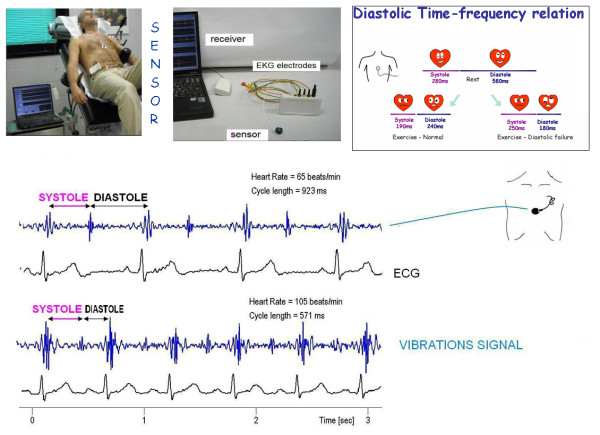Figure 8.
Operator-independent cardiologic systole and diastole quantification. The transcutaneous force sensor is based on a linear accelerometer. We housed the device in a small case which is positioned in the mid-sternal precordial region and is fastened by a solid gel ECG electrode. The acceleration signal is converted to digital and recorded by a laptop PC, together with an ECG signal. An analog peak-to-peak detector synchronized with the standard ECG scans the first 150 ms following the R wave to record first heart sound force vibrations and the 100 ms following the T wave to record second heart sound force vibrations. A stable, reproducible, and consistent first heart sound and second heart sound signal is obtained and utilized as time markers to continuously assess cardiologic systole and diastole during exercise, or pharmacological stress echo. Modified from Bombardini et al. Cardiovascular Ultrasound 2008 6:15 [24]

